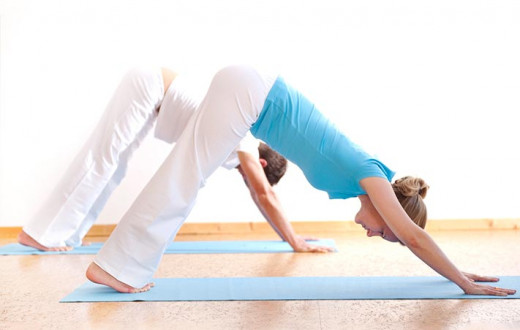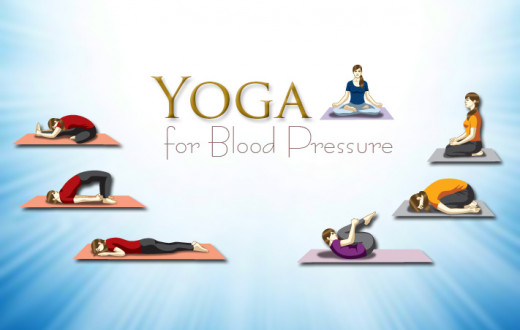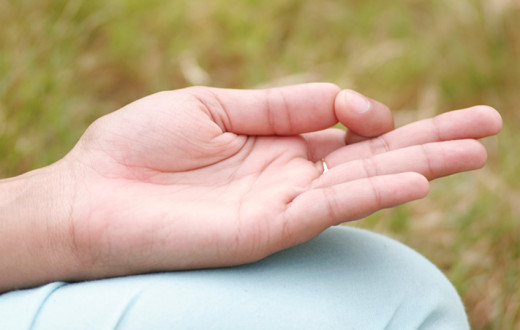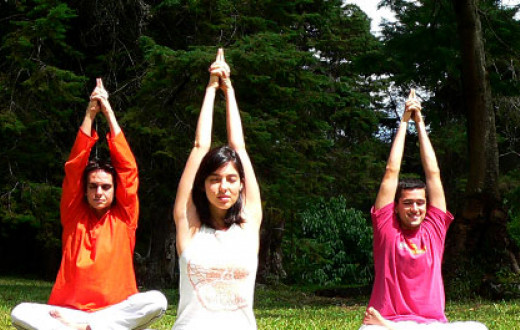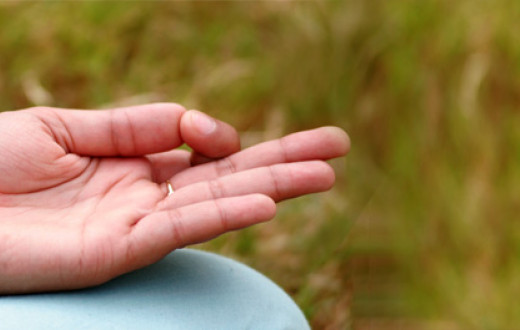Q:What are the benefits of doing yoga?
The practice of Yoga includes a very holistic approach to health. It includes practices which focus on the well being of the body, mind and soul. Initially the benefits are very subtle but over a period of time when iy becomes a way of life, the benefits are very obvious. To read more
Q:Is Yoga enough to keep you fit?
If by yoga, you mean asanas, then definitely it is not enough to keep you fit. Fitness depends as much on the state of mind as on the state of the body. Thus a well balanced diet, healthy lifestyle, an appropriate yoga routine (asana, pranayama, meditation) and using the knowledge given in the courses can help keep you fit. And doing all these things are very natural and effortless for all of us. That’s why in the yogasutras it is said, “Prayatna shaithilya anantha samapattibhyam." Letting go of the effort and merging with the Divine presence are the two aspects of asana practice. To experience yoga, it is best to learn with a trained teacher and experience the totality of yoga.
Q:Are there any side-effects of doing yoga?
When done under proper supervision of a trained yoga teacher, there are no side effects. If at all the effects are only positive.
Q:Can the practice of yoga help in alleviating incurable diseases?
Yoga is not a substitute for medicine. However it does help the body mind complex to cope with stresses. Many patients with incurable diseases have experienced a remarkable transformation after doing The Art of Living courses. You can visit the section on Yoga Experiences.
Q:Is the practice of yoga asanas enough? Or does one need to study different scriptures on yoga - like Patanjali's yoga sutras - to get a complete experience?
The field of yoga is like an ocean. Some people come and sit on the shore, enjoying the cool breeze. Some wet their feet. Some swim and surf. Yet others dive deep and get the pearls. It is up to you to decide how much and what you want to do. With the help of an experienced teacher, you can explore the full potential of your life through yoga.
Q:How is Art of Living's yoga different from yoga taught elsewhere?
Yoga is not just an exercise but a state of oneness. This state is achieved through many ways - asana, pranayama, meditation, service, devotion and knowledge. Sri Sri Yoga emphasizes the holistic aspect of yoga, bringing a difference on all levels of the being - body, mind and spirit.
Q:Which school of yoga is taught at The Art of Living?
Sri Sri Yoga is a celebration of the diversity in Yoga in a simple and joyful manner. We combine yoga essentials - breathing techniques, stretching and postures, meditation and relaxation, and yogic knowledge. By incorporating all these beautiful facets of yoga we are able to look deep beyond the level of the physical body and really sharpen our sensitivity and awareness of subtler levels of existence. Practice of Sri Sri Yoga cultivates a more healthy and happy lifestyle.
Q:Where are the centers of Art of Living's yoga courses?
To know about the centers of Art of Living’s Yoga courses click here
Q:How does one become a yoga teacher?
The Sri Sri Yoga Teacher Training Certification Programs are an excellent opportunity for those interested in teaching yoga, or for those who would like to enrich their spiritual experience and bring more discipline in their practice. To know more click here
Q:Do you need to go to the gym if you’re doing a yoga workout?
Participating in a yoga session after going to a gym can help release the stresses that build up after the exercises. The muscles get toned and do not get excessively fatigued. It complements the gym schedules and keeps the body from burning out.
Q:What asanas are included in a complete yoga workout?
A complete yoga sequence should comprise asanas that help to balance out the imbalances in the system. A healthy mix of standing, sitting and lying down postures is provided in the Sri Sri Yoga sequences. It is very important to include yoga nidra at the end of any asana sequence as the body and mind needs the time to assimilate the effects of the asanas.
Q:What is the difference between yoga and exercise?
In yoga, one practices the asanas in a rhythmic manner that involves the body, mind and spirit. Yoga is like an appointment with the Self, which rejuvenates one’s entire system. It leaves you feeling relaxed and energized. In exercise, the focus is more of physical well being. After an ordinary exercise session, one feels exhausted. And is not so after a yoga session.
Q:What is the minimum age to start yoga?
An infant is a born yogi. The whole process is of relearning. However for our general courses, the minimum age is 15. We do have special courses for children called ART Excel and YES.
Q:What diet complements a daily yoga regime?
The yogic diet is vegetarian and wholesome. The food we eat affects not just our body, but our mind also. Intake of the right amount of food is important - not too little, or too much. Fresh, light, and balanced food are high in prana or energy. The yogic diet consists of fresh fruits, vegetables, nuts, whole grains, lentils, and a small quantity of milk and milk products.
Q:Is yoga a Hindu practice?
Although yoga has its origins in Hinduism, yoga transcends any religion or culture. Its application is universal. Knowledge, which is scientific or spiritual, has universal application regardless of its origin. For example, the law of gravity was discovered in the West, but its application is universal. It would be childish of people in the East, to say that they will not use televisions and telephones, just because they were invented in the West. Similarly, it would be very narrow minded to say, that one will not use yoga because it comes from Hinduism - even though its benefits are well known.
Q:Which is the best time for practising yoga?
The best time to do yoga practice is early in the morning, when your stomach is empty, and you have a minimum number of distractions. It is also recommended that you repeat your practices late in the afternoon, or early evening before dinner. Morning practices keep your enthusiasm and energy levels higher during the day, and evening practices help you get rid of stresses and tensions accumulated during the day – refreshing you.
Q:Can you suggest some asanas that I can do while I am at work and have less time?
A DVD with the appropriate sequence is available in the Divine Shop. You can use it to practice at your workplace. A simple stretch that is very effective is what we call "Pushing the wall". Just stretch the hands (one at a time) to the sides, pulling the fingers towards yourself as if you are pushing an imaginary wall. This helps to improve circulation and gives a much needed rest to the hands from the shoulders to the fingers.
Q:How do I get a better posture in my asana? How do I maintain balance in any asana?
To attain a better posture and balance, the first thing to do is to let go of the effort in the mind. In the yogasutras, Patanjali gives two methods to deepen your sadhana. The first is Abhyasa, practice. The more you practice, the better you get at the postures. The key is to not force but gently improve the posture using the breath as a tool. You will notice that using the breath you are able to go deeper in the posture. The second is Vairagya - dispassion. The ability to drop the world is a big help in the practice. Mentally surrendering to the posture, not comparing or analysing too.
Q:What should be the duration of a yoga practise session?
Aim at doing your practices - for at least one hour every day in the beginning. If you do not have one hour every day, do your practices for whatever duration you can, however small it may be. Be regular and consistent in your practice. 20 minutes of daily practice is better than two hours of occasional practice.
Q:Could you explain the significance of the Surya Namaskar?
The Surya Namaskar - literally means Salutations to the Sun. Surya Namaskar is a beautiful set of asanas that massages, detoxifies and stimulates almost every organ of the human body, brings suppleness to the spine. It can be done fast, as a cardiac toner or at a slower pace to strengthen and tone the muscles and enhance the functioning of internal organs. It can also be performed with the different mantras (names of the Sun). Like all other yoga practices, it is important to learn it under proper supervision and guidance.
Q:What is the Health and Happiness workshop?
The Health and Happiness workshop provides practical tools - to achieve, and maintain health and happiness in our modern, hectic world. This workshop is designed mainly for those, who have not completed the Art of Living Course. About the Health and Happiness workshop:
- Attends to all levels of our physical existence - Body, Breath, and Mind
- Suitable for all age groups and skill levels
- Take-home techniques for greater peace of mind and well being
Q:Where can I plan to have a safe, comfortable practice?
Do the yoga practices in a clean and well-ventilated space. If possible, keep a separate room for your yoga practices. You will build positive energy in that room, which will provide healing, strength, and comfort to you and others. Keep this room at a comfortable, warm temperature. The body stretches better in warm temperature. However, avoid having the temperature so excessively high, that the body feels uncomfortable, and the mind becomes restless - since this defeats the purpose of yoga. Practice away from any furniture, or any sharp objects.
Q:How do I justify, the time I spend on myself to do yoga practise?
A happy person spreads happiness all around. So you are doing these yoga practice - not just for yourself, but for others’ happiness as well. Do not feel guilty for taking time out for yourself. Give yoga an important place in your life. It will bring many rewards.

